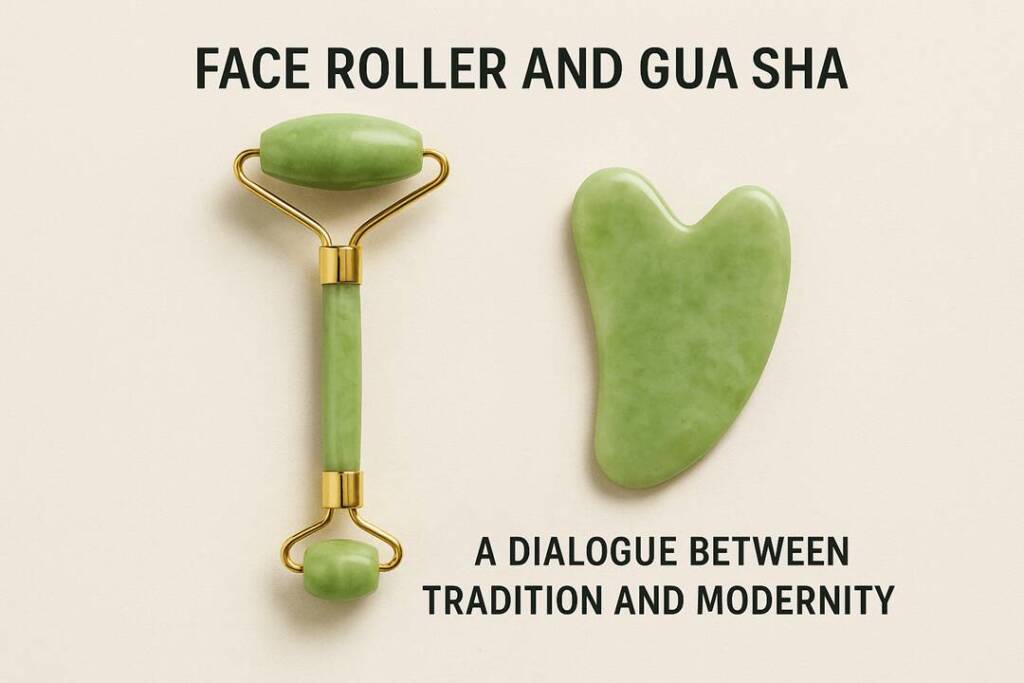
In recent years, facial care tools have become an essential part of daily skincare routines. Among them, the face roller and gua sha stand out as two of the most popular. While the roller is favored for its convenience and ritual-like charm, gua sha carries a deep cultural heritage rooted in Traditional Chinese Medicine (TCM). They are often compared side by side, yet their origins, effects, and user experiences reveal very different values.
I. Origins and Cultural Background
Gua Sha originated in TCM as a body therapy aimed at promoting blood circulation and releasing internal stagnation. Over time, it evolved from a healing practice to a facial beauty method, focusing on sculpting and reducing puffiness.
The face roller, by contrast, gained popularity in the Western beauty market in the past decade. Although modern in design, it often borrows from Eastern traditions by using jade, quartz, or other healing stones. Social media and celebrity endorsements have further fueled its rise, making it a symbol of self-care and refined beauty rituals.
II. Benefits and Differences
When it comes to results, rollers and gua sha work in distinct ways:
Facial sculpting: Rollers provide a temporary lifting sensation with gentle upward strokes. Gua sha, through deeper pressure, helps define the jawline and facial contours with consistent use.
Circulation and puffiness: Rollers, especially when chilled, work well for quick morning depuffing. Gua sha promotes lymphatic drainage more effectively, offering longer-lasting results.
Relaxation and experience: Rollers feel soothing and effortless, ideal for a calming skincare ritual. Gua sha, on the other hand, can feel more therapeutic, often accompanied by mild soreness or redness.
III. Science and Safety
Scientific studies suggest that gua sha may improve circulation and help reduce inflammation, with documented use in some clinical settings. For face rollers, scientific evidence is limited, and their effects are mostly tied to relaxation and surface-level massage.
In terms of safety, rollers are low-risk and suitable for nearly all skin types, including sensitive skin. Gua sha, due to its deeper pressure, can sometimes leave temporary marks and is not recommended for individuals with clotting disorders or highly reactive skin.
IV. Usage and Techniques
Correct technique is key to maximizing benefits:
Face roller: Use with a serum or moisturizer, gliding gently from the center outward and bottom upward. Store in the refrigerator for enhanced cooling and depuffing effects.
Gua sha: Always pair with oil or essence to reduce friction. Follow lymphatic pathways with moderate pressure, avoiding repeated scraping on the same area.
Combination use: Begin with gua sha for deep stimulation and drainage, then follow with the roller for calming and soothing.
V. Market Trends and Consumer Behavior
Both tools are thriving in today’s global beauty market:
Material diversity: From jade and rose quartz to stainless steel, different materials appeal to both functional needs and psychological desires.
Cross-cultural fusion: Gua sha transforms from an ancient Eastern therapy into a modern beauty practice, while rollers merge Western lifestyle branding with Eastern stone culture.
Branding and marketing: Rollers are promoted as elegant, ritual-driven accessories, whereas gua sha is marketed with wellness and TCM narratives.
Conclusion
Whether it is the tradition-rich gua sha or the social media–driven face roller, both reflect the modern pursuit of beauty and wellness. The roller is ideal for daily relaxation and surface care, while gua sha offers deeper sculpting and circulation benefits. Rather than competitors, the two tools complement each other. At the crossroads of tradition and modernity, they together shape the new wave of holistic beauty culture.

